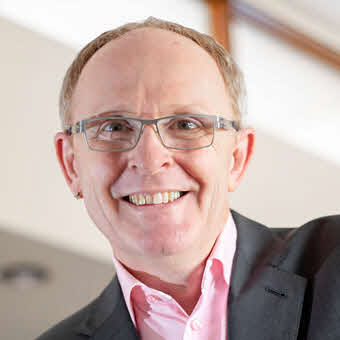Episode 140 Premium: Managing Complexity on Projects
This episode is reserved for subscribers of the Premium Podcast. Learn how to subscribe to the Premium Podcast to access this interview and transcript...
 Last week we heard how Jerry Manas uses simplicity, clarity and focus to approach managing the ever increasing complexity in business processes. This means that project management processes consequentially are getting more and more complex as well. And we project managers need to be able to handle them.
Last week we heard how Jerry Manas uses simplicity, clarity and focus to approach managing the ever increasing complexity in business processes. This means that project management processes consequentially are getting more and more complex as well. And we project managers need to be able to handle them.
But what does this approach actually look like in real life? What exactly does he do and how does he do it? Where does he begin his work and what hands-on advice does he have for us. In particular I want to know from him what the first 3-4 steps are that we should take when we begin working on a complex project.
Click "Read more..." below to read the transcript.
PM Podcast Episode 140 Premium Transcript
Episode Transcript
Below are the first few pages of the transcript. The complete transcript is available to Premium subscribers only.
Podcast Introduction
Cornelius Fichtner: This is The Project Management Podcast™. We bring project management to beginners and experts. Find us on the web at www.pm‑podcast.com or send your emails to
Cornelius Fichtner: Hello and welcome to this Premium Episode #140. I am Cornelius Fichtner.
This is The Project Management Podcast™ for the 12th of February 2010, nice to have you with us.
Here is another Premium Episode to which only you, our premium subscribers, get access. And of course it is also only you the premium subscribers who receive a complete transcript of our episodes. We started creating these transcripts for you earlier this year around Episode # 136.
Here is another reminder for you that I am currently on vacation in my home town of Solothurn in Switzerland. There will be a two-week pause until you receive the next episode.
Last week, we heard how Jerry Manas uses simplicity, clarity and focus to approach managing the ever increasing complexity in business processes and consequentially in the processes that we need to manage on our projects. But what does this approach actually look like in real life? What exactly does he do and how does he do it? Where does he begin his work and what hands-on advice does he have for us? In particular, I want to know from him what the first three to four steps are that we should take when we begin our work on a complex project.
Here we go.
Podcast Interview
Female voice: The Project Management Podcast’s feature Interview: Today with the bestselling author of “Napoleon on Project Management” and “Managing the Gray Areas” – Jerry Manas.
Cornelius Fichtner: Hello Jerry! Once again, welcome back to The Project Management Podcast™.
Jerry Manas: Yes, Cornelius.
Cornelius Fichtner: In this interview, you are going to open up your bag of tricks and let us take a look at your experience. In particular, we are going to take a look at a project of yours, a case study, in which you helped a client reduce complexity. So this is a how-to interview, a how-to episode. But let’s begin by introducing the project itself. What industry was this client in?
Jerry Manas: This was in the healthcare industry.
Cornelius Fichtner: Okay. And what problem was the client facing?
Jerry Manas: Well, the Organizational Effectiveness Department at a hospital. They were asked to create an Enterprise PMO, EPMO, as we have seen everybody is trying to implement. But they weren’t one that was simple and flexible, whose processes will be accessible to anyone in the organization who manage projects. So they wanted something that was really accessible to any department in the organization and a lot of them were not trained in project management.
Now, there were several existing adding a little bit to the complexity. There are several existing PMOs I had to work with. There was one in IT and there was one in Facilities and both of them were very mature and add complex processes. When I say ‘complex processes,’ in some cases, they were overly complex but in a lot of cases they were necessarily complex for those specific areas. So they wanted a central PMO that could work with these organizations but they kind of have a standard across the organization. They weren’t quite sure how much the leverage of that is.
There was a concern about how to integrate all of these since the other departments have specific needs and their existing models were just overly complex for general use. So that was the…[they just stopped it].
Cornelius Fichtner: Why did they happen to select you and your team to help them? Were you just ill and you happen to be at the hospital and like – I’m here, might as well help you?
Jerry Manas: I happen to be in the neighborhood. Actually, the director of the Organizational Effectiveness attended one of my key notes. I did one on the Virtual PMO and it was about how to create a flexible, integrated model with limited resources but heavy on relationships and clear on goals. So they liked what they heard and so they recognized that would be a good fit for their situation and luckily, they recognized it. So they did ask me to come and take a look at it. It worked out pretty well.
Cornelius Fichtner: Right. How long was the overall project and how much out of this time did your engagement with the hospital last?
Jerry Manas: Really, the overall engagement was only about two weeks.
Cornelius Fichtner: Okay.
Jerry Manas: There was one week on site. It was within their budget. They have had a specific budget they needed to adhere to. It was sort of framed as a catalyst program to get them started in the right direction and then get to the essential processes and templates set up.
Cornelius Fichtner: Okay. Oftentimes, most of the people that I’ve worked in, it was the third or fourth time that people tried setting the PMOs and they failed miserably before and sometimes even I failed.
In this particular case, was this the first time that they were setting up, trying to set up this EPMO or was this a repeat performance so to speak?
Jerry Manas: What’s on my record, I think another organization was there was a fifth attempt of a PMO. But this particular one, it was their first attempt at a central organization.
Cornelius Fichtner: Okay.
Jerry Manas: They viewed project management as a much needed improvement area and especially among the areas outside of the current PMOs that existed. So they looked at that as a strong need so that they’re being asked to create a centralized organization. So I believe this was a first attempt of that.
Cornelius Fichtner: Alright, so we’ve got the setting, we know where we are and what we’re trying to do. Now, let’s identify the areas of complexity here and that help there. So what were some of the complexities that you came across and had to help with? You mentioned they were existing PMOs, right? I assume that added complexity.
Jerry Manas: Absolutely, I think a key was to meet the leaders of these existing PMOs which we did both separate and together to discuss what areas can be leveraged across the organization.
So the first thing we needed to do was to meet individually with these other PMO leaders and then get them together. They always started seeing a lot of commonalities.
And we also examined best practices across these PMOs to see what made sense to standardize any of them. So here we are again with the selective standardization. It makes sense to standardize anything across the board. I think we came up with a few things.
But we got a sense of where their challenges were too, where they felt we might be able to help because in that kind of set the right tone upfront, but we’re able to agree on common stage gates so that was simplified management reporting across the organization because that was one need.
So that was a huge accomplishment if they were going to create a certain high level reports. So we discussed where it made sense to have integrated reporting and where it didn’t and how we could get this information using common stage gates.
And we also talked about some of the complexities of facilities’ projects with an IT component and vice versa because organizations have plenty of those and ways to communicate better across those groups. We’ve covered a lot of ground with the existing PMOs. I think it really helps a lot to really get things out on the table.
Cornelius Fichtner: Was the EPMO targeted at replacing the other two PMOs or was it just more of an umbrella organization?
Above are the first few pages of the transcript. The complete PDF transcript is available to Premium subscribers only.

